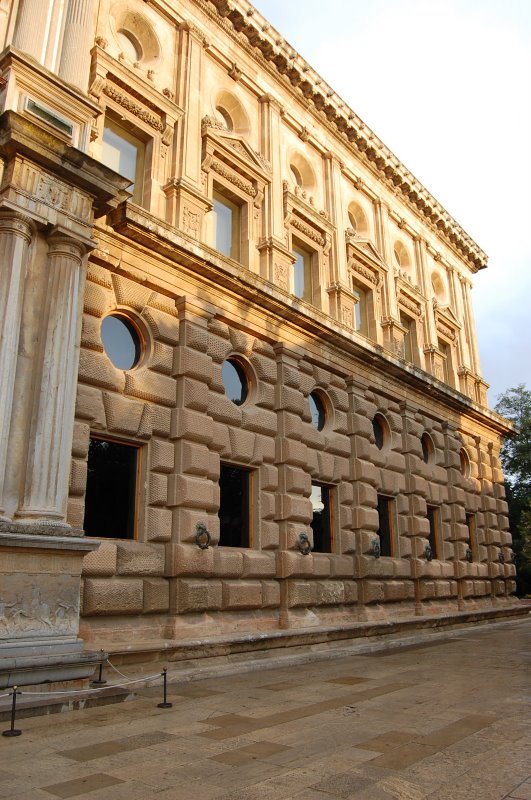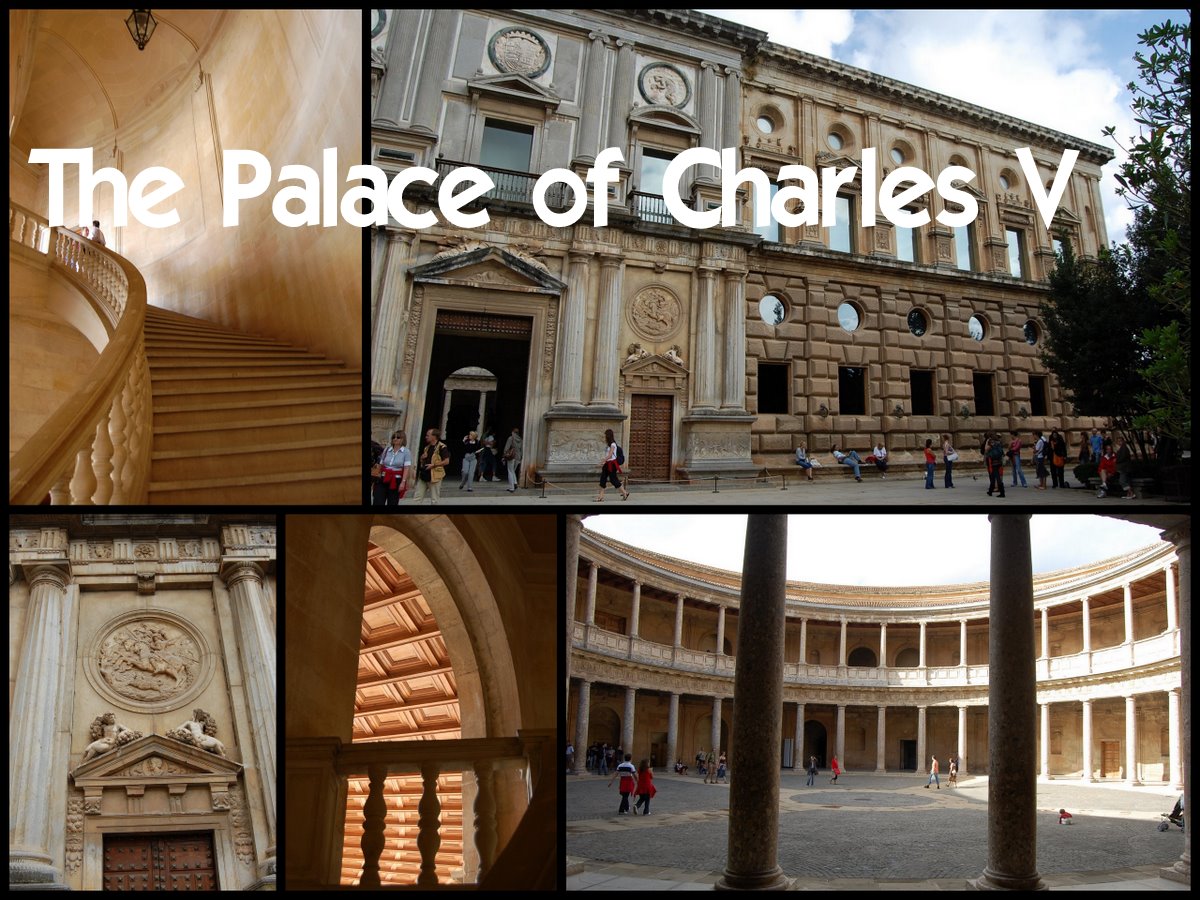If you have good bandwidth, Please join us in
the following slide show to give the Alhambra and
Generalife, Granada the viewing it deserves by clicking here.
|
|
Façades

And now, as the zany sages say, time for something
completely different. Despite the fact that we are in the
place of incredible Moorish medieval architecture, Dick's
favorite building was the Renaissance palace of Carlos
V.

This may not belong here -- but it is beautiful and one
of the best proportioned buildings anywhere. Carlos V,
grandson of the conquering Ferdinand and Isabel who drove
the Muslims from Spain, thought he would build a palace
to rival that of the Nasrids.

The Moors were tolerant rulers and the Christians had a
neighborhood adjacent to the Nasrid palace. This palace
was built in that spot.
While it may have been incongruent within a Moorish
jewel, its very existence probably saved the Alhambra
from destruction. You couldn't destroy a palace of the
king and its grounds.

Above is a software pastiche which does not do justice to
the front facade of the palace. It is, indeed, flat --
the side of a square. It's built in the style of its day
-- Italian Renaissance.
A perfect circle within a near-perfect square
Emperor Carlos V took little interest in its
construction; he left that to the governor, a scion of
the noble Mendoza family. Note here the 8 Ionic pilasters
which will be repeated en masse (but in 3 dimensions) in
the interior portico. Also note the circle and the square
window patterns of the first floor. The crest of Carlos's
son, Philip II, centers the whole facade.

This Google-eye view shows the perfect circle within
the perfect square -- completely symmetrical except for
the rise of the chapel roof at one corner. The roof over
the circular galleries was added only in 1960.
The collonnaded courtyard

Architect Pedro Machuca had trained with Michelangelo and
Rafael. While appearing today quite classic, this was a
radical building for its day as much Spanish monumental
architecture was emerging from the Gothic era.

Here Doric (lower level) and Ionic (upper) capitals hold
up curving Tuscan lintels on both floors.

Construction of the palace started around 1528 -- two
decades before Michelangelo became architect of St.
Peter's in Rome.

Here's the interior of the gallery. Ironically, this was
never occupied as a royal palace -- or even finished.
Emperor Carlos concluded that the seat of his realm must
be more central in Spain than the southern city of
Granada.

Groups meet at the center where acoustics tend to be
excellent, focused in by the walls.

Above is a close-up of the façade.
Next, we visit some of the the lesser buildings of
the Alhambra. Join us
by
clicking here.









